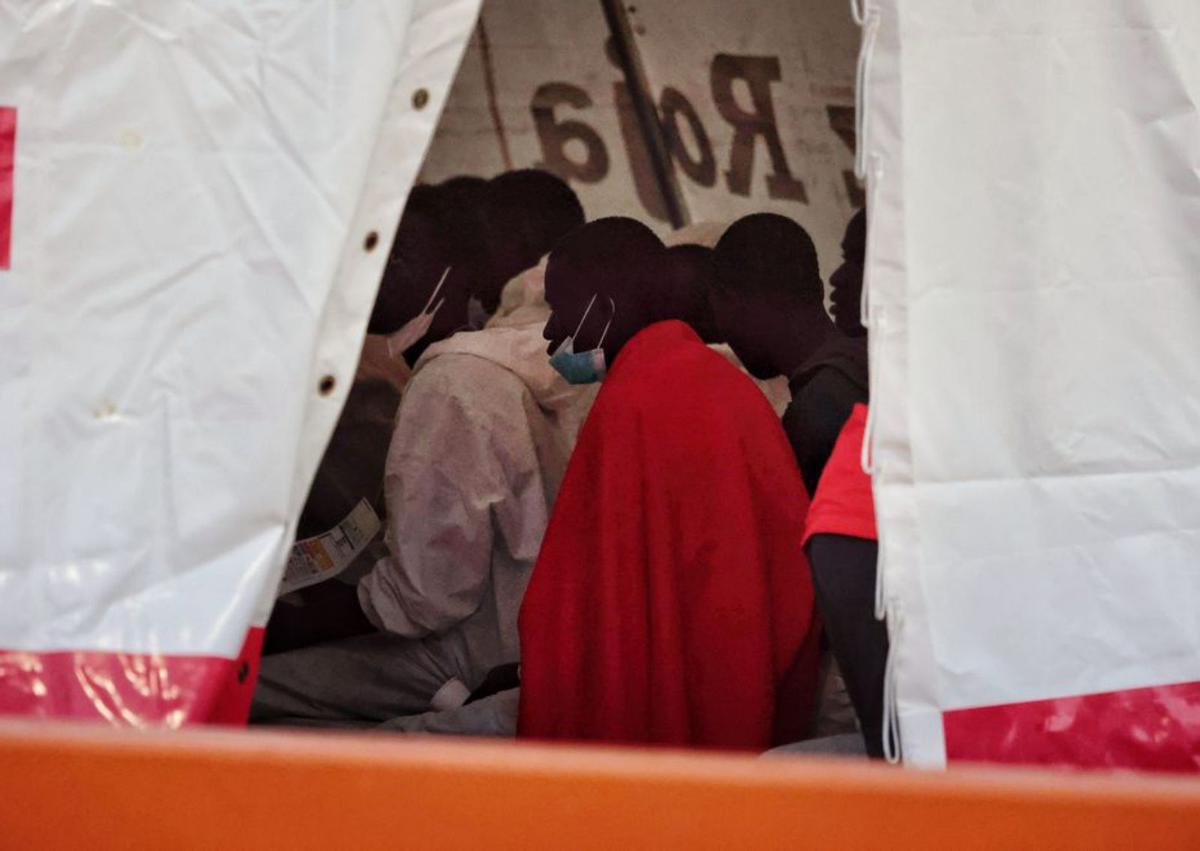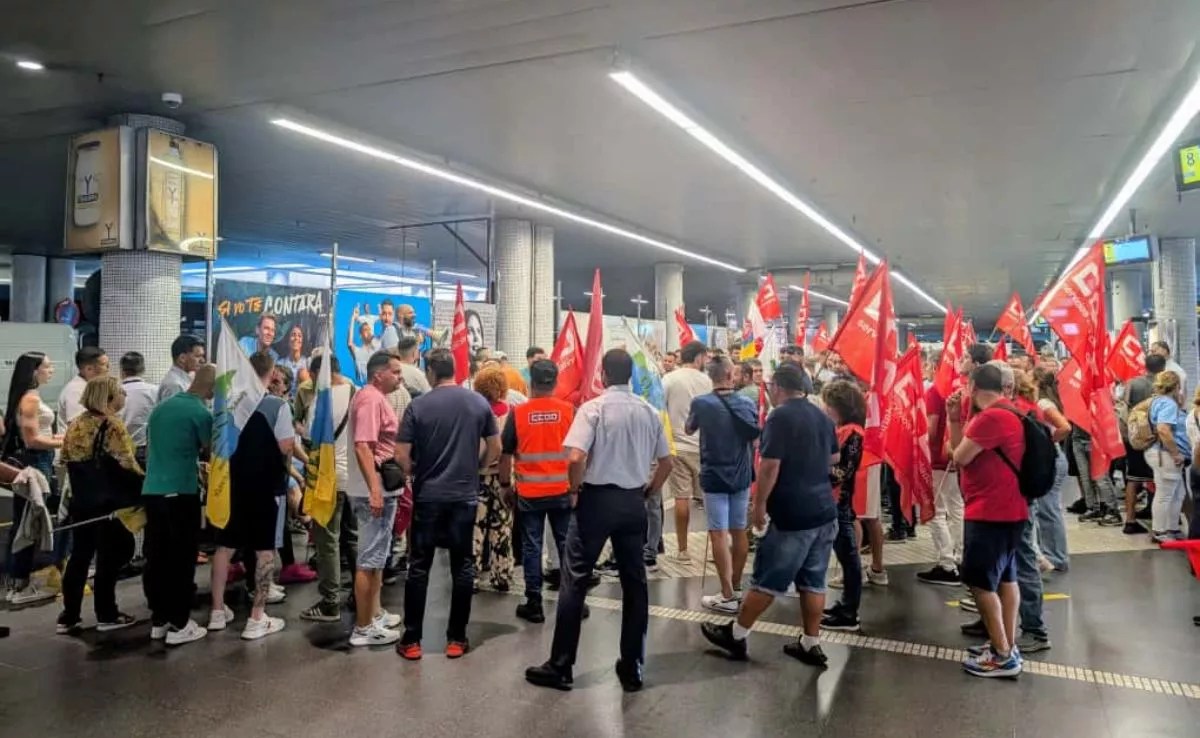Two worlds connected at sea. On one side, the 200 holidaymakers circumnavigating the globe for six months on a luxury cruise ship, with the cheapest cabin costing 40,000 Euros; on the other, those who are desperately seeking a better life for themselves and their children. Both realities became entwined on Wednesday afternoon by several ropes.
In the middle of the night, the 200 passengers of the Insignia went from enjoying idyllic holidays to facing the reality of those wanting to escape misery. Several of those who managed to save their lives stated yesterday, upon disembarking at the port of Santa Cruz de Tenerife, that when they departed from Mauritania, they were over a hundred people. At least 33, therefore, would have perished on the journey. The NGO Caminando Fronteras raises the number of missing persons. According to the information provided by the relatives and passed on to the Spanish authorities, around 150 migrants were aboard the small boat.
The 67 people who survived the crossing – the boat was located on Wednesday afternoon 815 kilometers south of El Hierro – told the Red Cross personnel who assisted them at the pier that they had been at sea for nearly three weeks. The journey, until they were located, lasted between 19 and 21 days. This was explained by one of the doctors who treated them.
Moreover, from the fourth day onwards, they were left without a motor, so they were adrift in the sea for two and a half weeks. Then, their food ran out, and they ran out of water several days before being located by an initial vessel that, due to its size, couldn’t approach the precarious boat of the migrants but sounded the alarm. It was very close to them getting lost in the middle of the Atlantic and facing certain death.
In the morning they were attended to in four tents set up in the area of Muelle Sur, next to where the Insignia docked. Inside were the 68 people rescued – from Burkina Faso, Mali, Mauritania, Gambia, and Senegal – and three of the five corpses recovered from the small boat. A sixth migrant died during the transfer to Tenerife. Among the survivors are three minors and a pregnant woman.
Five of the migrants were taken to the University Hospital of Canarias (HUC) and the University Hospital Nuestra Señora de La Candelaria (Hunsc) due to their health conditions.
The Insignia arrived at 5:00 in the morning, two hours earlier than scheduled. On one side were the survivors, some of whom managed to reach the tents set up by the Red Cross by their means, while others were transported in wheelchairs or ambulances; on the other side were the cruise passengers and finally the crew members. All with a story to tell.
The rescue operation, undertaken at night, under very challenging conditions with waves reaching up to three meters in height, was carried out by the crew. They were the ones responsible for hoisting the migrants onto the ship using ropes. One of them even descended to the small boat to retrieve bodies.
The operation was carried out amidst extreme nervousness and eagerness of the survivors to board the cruise ship as quickly as possible.
Two bodies remained on the fishing boat that, due to the circumstances, could not be brought aboard the tourist ship. A deflector was left inside to aid their location by the Guardamar Urania, from Salvamento Marítimo, which has now been dispatched to attempt the recovery of these bodies.
It was precisely the Salvamento coordination centre in Santa Cruz de Tenerife that directed the operation in which the luxury cruise ship was involved. The Insignia was requested to divert about 100 kilometres from its route and assist the barely afloat small boat – already in a precarious state – sighted a few hours earlier by the Philipp Oldendorff, a Liberian-flagged vessel that had set sail from La Coruña on its way to Brazil. The crew of the oil tanker alerted the Spanish authorities about the small boat’s situation, but could not rescue its occupants due to the dimensions of the vessel, with a length of 254 metres, making the rescue dangerous.

Transfer to the hospital from Puerto de Santa Cruz. / MARÍA PISACA
The crew of the Insignia then strictly applied the established international protocol for these situations. For this reason, María Dolores Septién Terreros, head of the coordination centre for Salvamento in Santa Cruz de Tenerife, and the president of the Port Authority of Santa Cruz de Tenerife, Pedro Suárez López de Vergara, yesterday awarded the captain of the tourist ship, Stjepan Zuzic, with a plaque as recognition for his solidarity intervention.
The regional head of First Emergency Response for migrant population of Red Cross, José Antonio Rodríguez Verona, explained that with waves several meters high and considering the large size of the ship compared to the migrants’ boat, the approach maneuver had to be carried out with great care. However, despite the situation, the rescue was “successful”, as the canoe did not capsize or sink, and there were no further victims.
Out of the 64 survivors assisted by the Red Cross at the Santa Cruz docks, five were transferred to various hospitals with problems of dehydration, malnutrition, and hypothermia. And eleven other men were cared for in the makeshift hospital set up for the occasion.
A shattered bubble
[–>
Verona explained that some of the survivors recovered somewhat on the cruise, thanks to the food and drink offered by the Insignia crew.
Zuzic stated that “it was an honour to help them in a challenging environment, in a procedure that lasted about three hours, was not easy, and in which the entire crew collaborated.”
One of the American passengers, Lea, told Efe that, after boarding the ship, the crew made them take off the clothes they were wearing, which were thrown into the canoe. The shipwreck survivors were given masks, gloves, and overalls (working suits of the sailors), with which they disembarked in Tenerife. It took them about 30 hours from being hoisted onto the luxury cruise until they arrived on the island.
A Mexican couple of passengers, Gila Padilla and Jorge Cotic, admitted yesterday that the “impact” of what they saw “shattered the bubble of fantasy” they were in, with all the comforts at their disposal. “It was a horrible shock, because you have everything and you see those who really lack everything,” Padilla told Efe.
[–>
However, on land, the contrast between the lives of some and others could not have been more evident. If the first migrant who left the cruise did so in a wheelchair, with a distressed face and struggling not to fall, the tourists mostly did so two hours later, rested, freshly breakfasted, clean, and ready to board the municipal buses ready to take excursions around the island. Another stop in their journey around the world.
















